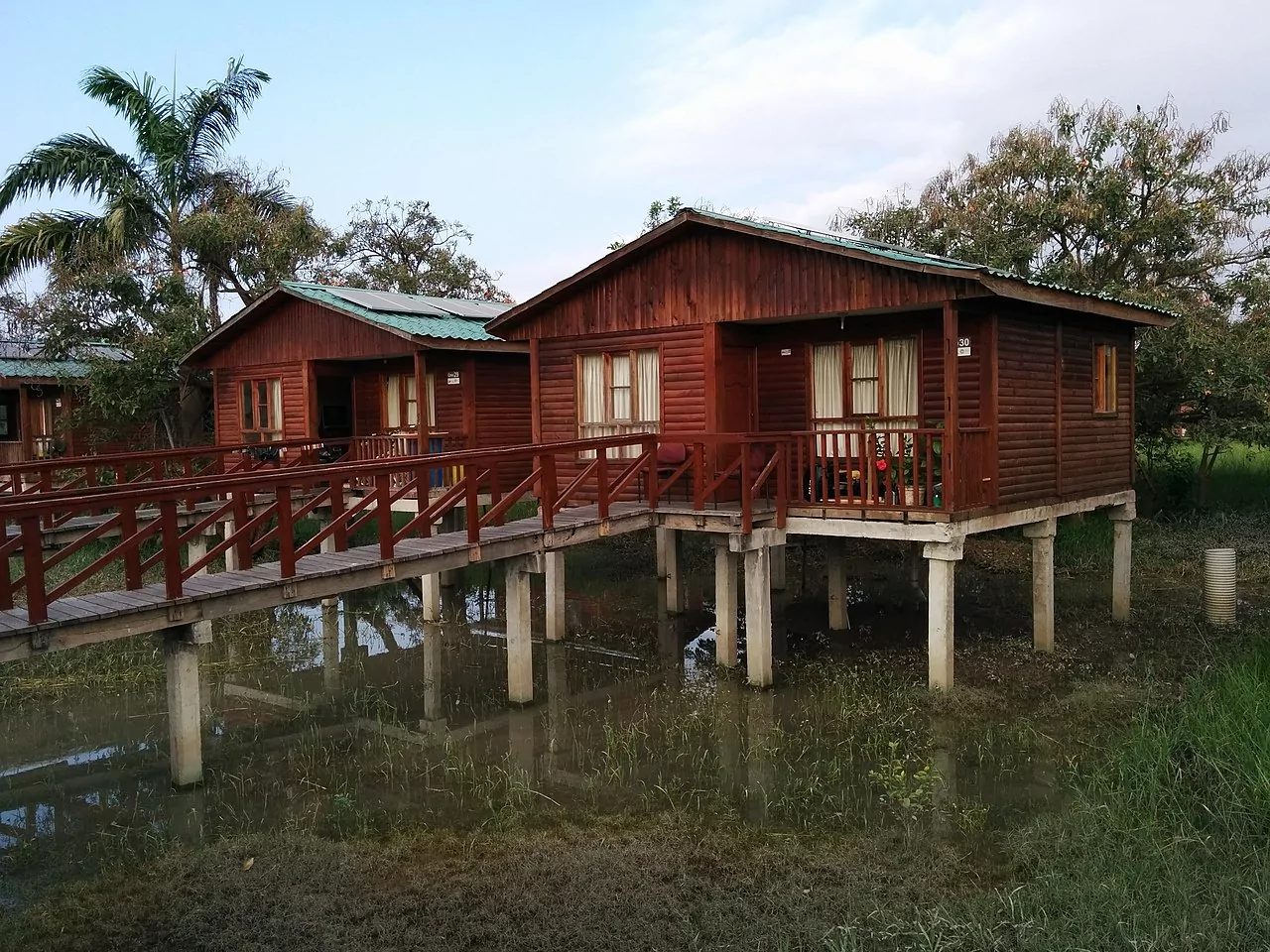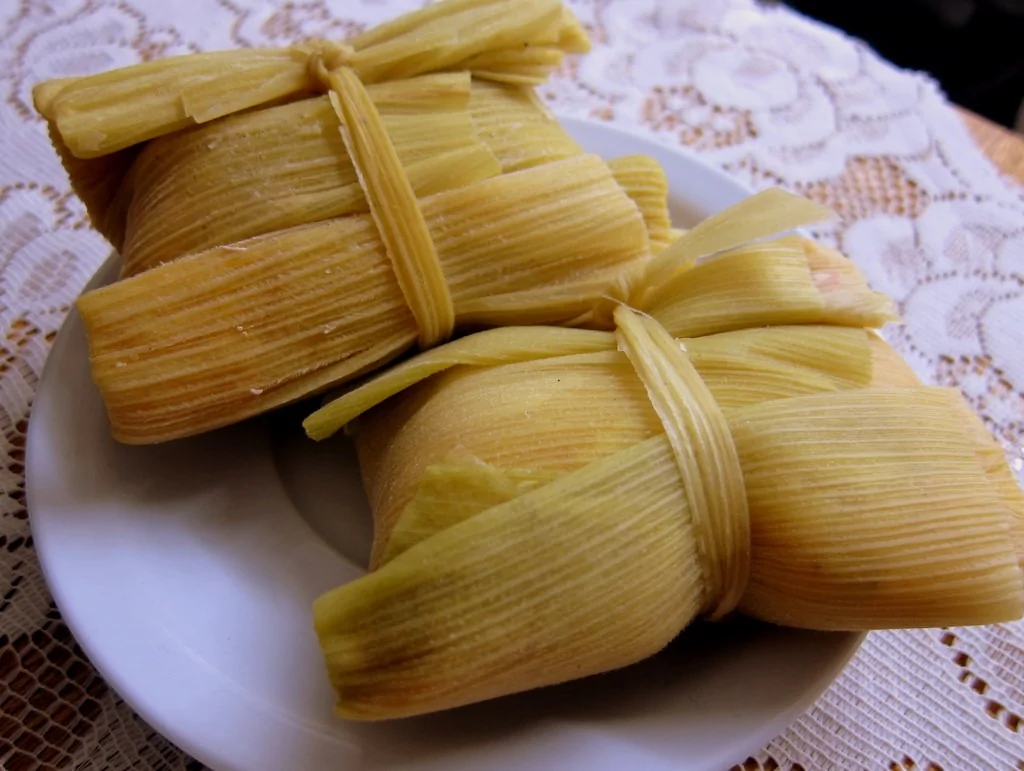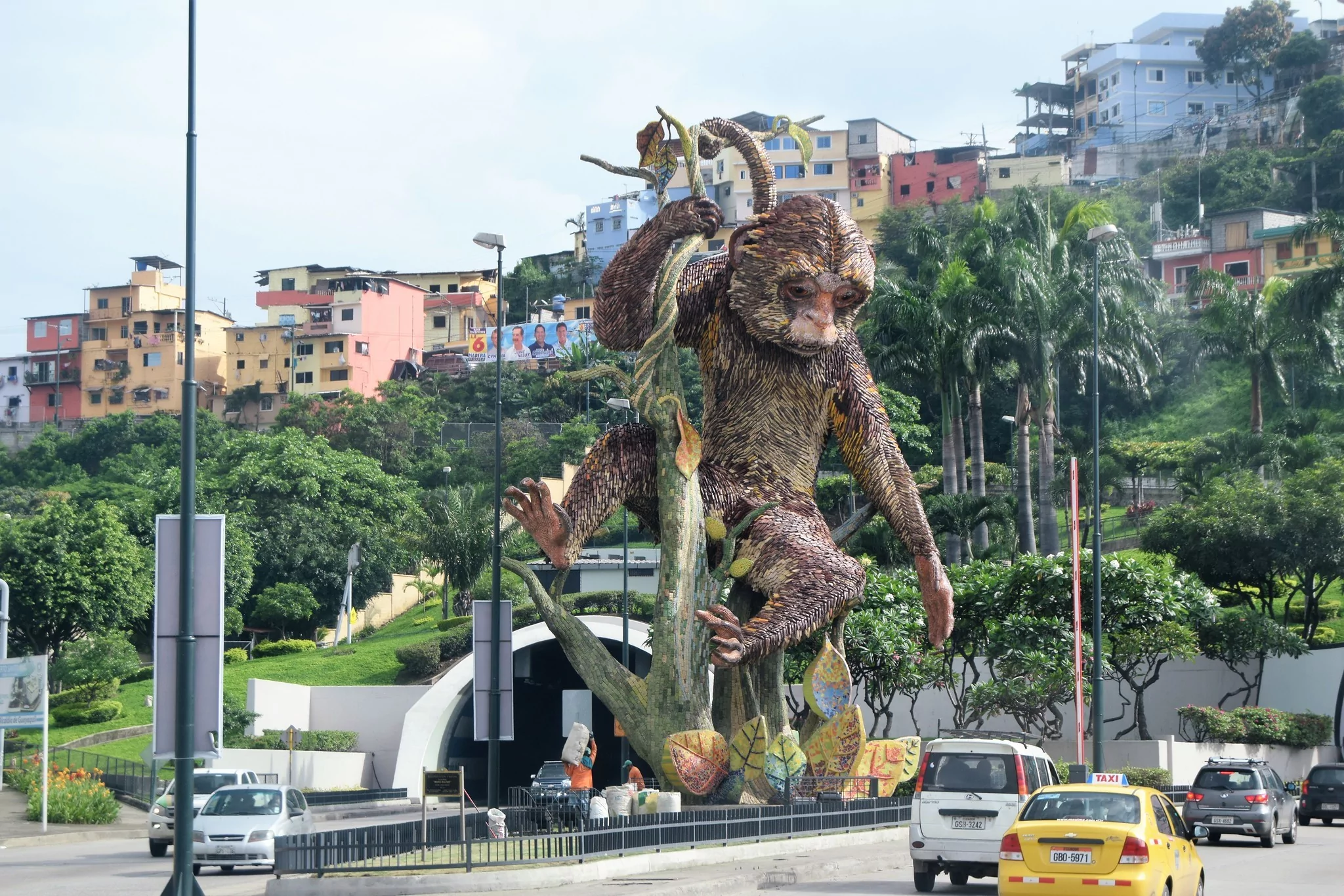
Situated along the Guayas River, Guayaquil is Ecuador's largest city and home to one of the busiest ports in South America. With its history dating back to the 16th century, it's also one of the oldest cities throughout the country, manifested by its myriad of old and colorful buildings. Despite the gloomy reputation and the fact that most travelers only visit the city as a stopover before heading to the Galapagos archipelago or the Andes, Guayaquil is the fascinating epicenter of modern Ecuador's culture and economy. While it's true that much of Guayaquil consists of recently built nondescript housing, alongside its gritty neighborhoods and generic tourist sites there are countless of intriguing places to explore.
Like most South American nations, during the last decades Ecuador has witnessed a significant population growth coupled with an economic progress. While the improvements in living standards certainly lifted millions out of poverty, they also put a stress on the country’s dwindling natural resources.
Lying west of Guayaquil downtown, Cerro Paraiso is one of those natural gems most affected by the recent economic development, as it’s constantly encroached by the city’s ever expanding urban sprawl.
Declared as a protect area in 1989, the forest has lost more than 25 percent of its original size, currently standing at merely 300 hectares. However, what the natural reserve lacks in size it makes up for in pristine nature, impressive biodiversity and stunning views of Guayaquil skyline.
The forest is home to tree frogs, whiptails, iguanas, opossums as well as dozens of bird species and is defined as a dry rainforest, featuring a lush and green landscape during the rainy season (from January to April), whereas at the rest of the year it’s rather dry, brown and mostly leafless.
Besides the charming glimpse of wilderness in the middle of a large metropolis, due to its high elevation the forest also has several lookouts that offer some truly spectacular vistas of the city’s urban parts, the best of which is Mirador “Bellavista”, directly overlooking Guayaquil city center.

Guayaquil skyline as it seen from Cerro Paraiso
photography by: Pablo Jarrín
Often dubbed as Guayaquil’s green lung, Santay Island provides a rare glance of the region’s endemic flora and fauna without having to leave to comfort of the big city. The lush island is surrounded by the Guayas River and accessible by two pedestrian bridges, from the town of Duran and another one from downtown Guayaquil.
What makes this 2,179-hectare island so unique is its diverse landscape, alternating between a tropical forest dominated by monkey pod trees and royal palms, and wetlands, whereas the latter even granted the island the honorable title of a Ramsar site. Interestingly, both the rainforest and the swamp are easily crossable by a network of dirt paths and elevated walkways, that not only offer some great views of the surrounding nature but also have a minimal negative impact on the local wildlife.
Apart from its pristine woodland, Santay is probably most renowned for the small group of crocodiles that roam its swampy terrain. 12 of those fearsome reptiles inhabit the area around the Camino a la Cocodrila, next to the island’s western riverfront.
The island is regarded as a protected area, yet surprisingly, roughly 200 people call this speck of land home, most of whom live in the Ecovillage, a stilted community atop the wetlands, just short distance away from the crocodile swamp. Unlike many similar cases, the villagers live harmoniously with the nature around, as their livelihood largely depends on the island’s eco-tourists that dine in the village’s restaurants, known for their scrumptious local food.

The stilted houses of Ecovillage, Santay Island
photography by: Editorenbici
Guayaquil’s location along the Guayas River Delta means that many parts of the city either border the Guayas River itself or sit nearby the numerous small estuaries. The many bodies of water that encircle and encroach this metropolis pose a sheer challenge to interconnect the city’s constituent neighborhoods, prompting a construction boom of bridges throughout the last decades.
Standing out as one of the quaintest bridges in the entire city, the Zigzag Bridge, known officially as “Paseo de la Juventud”, was built in 2012 across the Salado Estuary, linking two of Guayaquil’s major universities, Santiago de Guayaquil Catholic University and Guayaquil University (UG).
As the name suggests, the 220-meter-long pedestrian bridge is zigzag shaped, featuring street furniture and flower beds at each of its corners. Additionally, in front of every orthogonal corner lies a quadrant balcony that provides stunning views of the estuary and its mangrove-rich banks. Whereas most bridges often merely serve as a passage between two given points that are separated by some kind of an obstacle, Puente Zigzag is far more than that, regarded by locals also as a place for meetings and gatherings.
If you come all the way to the bridge, then, visiting the adjacent ” Parque Lineal del Estero Salado” is a must. This strip of lush vegetation along the Salado Estuary is home to typical endemic flora, myriads of cool sculptures and curvy walkways. The park and the zigzag bridge are both centered around the Plaza Guayarte, an ultra-vibrant public square with plenty of fashionable bars and restaurants.
Fussy taste buds and a fear of unknown food items often cause travelers to skip the local cuisine in favor of safer options like international fast-food chains. However, in some cases, like Mercado de Sauces 9 in northern Guayaquil, the local delicacies are presented in such an enticing manner that it makes them accessible even for choosy pallets.
Inaugurated in 2000, the market has more than 400 different stalls, offering a plethora of fruits and vegetables, meat, poultry and freshly caught seafood, all of which are oriented towards the Ecuadorian local cuisine, and routinely used as major ingredients in some of the country’s most popular dishes.
Alongside the typical market stalls are handful of eateries and snack bars, each specializing on a distinct nationally revered dish. For instance, a mind-boggling ceviche bar offers several types of cured fish and seafood that are kept in large alluring jars, served with avocado slices and assortment of appetizers, whereas a nearby small booth sells humitas, a typical steamed corn cake mixed with onion, cheese and herbs and wrapped in a corn husk.
If you aren’t sure what to choose for lunch or just eager to intensify your market experience, several local travel agencies provide a culinary tour across the market that besides tasting and explanatory sessions also includes a cooking class, where you have a chance to prepare by yourself scrumptious Ecuadorian food.

Humitas, a corn cake mixed with onion, cheese and herb, wrapped in a corn husk
photography by: Marcos Katz
When you think about religion in South America, the first thing that pops up into your mind is probably Catholicism, as 82% of the continent’s inhabitants are adherents of the Catholic faith. However, some Latin countries have significant religious minorities, including millions of people with Asian ancestry, many of whom practice Buddhism.
When it comes to Ecuador, the country has a small Asian community numbering about 25,000 people, some of whom are recently arrived expats from China and Taiwan. Following decades of demographic growth, in 2008, the Asian-Ecuadorian community inaugurated its first religious complex in Guayaquil, located near the city’s José Joaquín international airport.
Standing six stories tall (albeit, in practice the high floors make the building rather 10 stories tall), the 3,600 square meter Yuan Heng temple is architecturally inspired by a Buddhist temple in the Taiwanese city of Kaohsiung, with which it also shares the same name. The surreal sight of a giant Buddhist temple in the middle of a South American city is further highlighted by the building’s pagoda shaped roof and exceptional height relative to its surroundings.
While appreciating the temple from a distance is fascinating by its own right, the Buddhist center offers a large variety of activities such as Mandarin and cooking classes, meditation and even drawing sessions, as well as typical Buddhist festivities. Take note that the complex is open for visitors from Tuesday to Sunday, starting from 9AM to 12.30PM and then 2PM to 5.30PM, and at Sundays, from 10AM to 12PM.
The delicate balance between fighting poverty and protecting the environment is a major issue in Ecuador, that 40% of its territory is covered by a rainforest, which is constantly under a threat by the country’s rapid economic development.
This perpetual conflict caught the attention of a local Ecuadorian artist, Juan Sánchez Andrade, who created a series of sculptures made of ceramic pieces across Guayaquil in an attempt to increase the public awareness for environmental conservation.
The first statue to be erected was a giant iguana next to Aventura Plaza, honoring one of the city’s most emblematic species that inhabited the area far long before humans called it home. Afterwards, the artist created another sculpture near Guayaquil City Mall, depicting a colorful papagayo parrot that is endemic to the region and listed as an endangered species. The third and perhaps the most famous of all is Escultura del mono Machín, a 15 meter tall monkey hanging on a tree branch next to the Cerro Del Carmen tunnel.
Whereas art critics will most probably consider those statues as an utter eye-sore, their whimsical and flamboyant appearance make them unignorable, evident by the swarms of local Instagrammers who take photos on the backdrop of those controversial sculptures.

The sculpture of Mono Machín
photography by: Anne and David